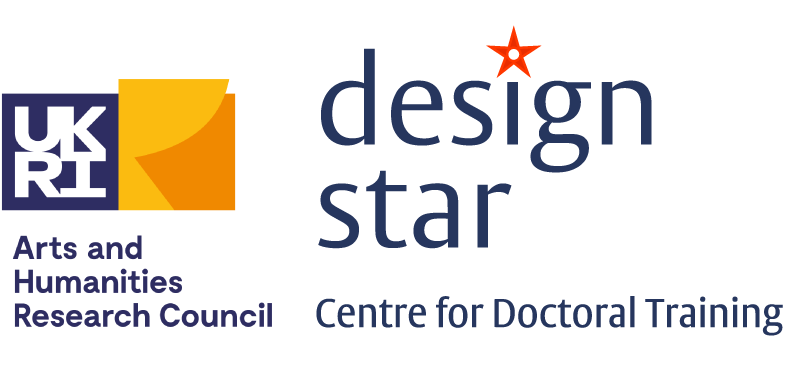Interviews with our students
Joyce Chan, Loughborough University
Erika Renedo Illarregi, Open University
Rui Leitão, Loughborough University
Andrew McIlwraith, University of Reading
Riccardo Olocco, University of Reading
Freya Wise, Open University
Rachel Warner, University of Reading
Projects and publications of our students
Jocelyn Bailey, University of Brighton
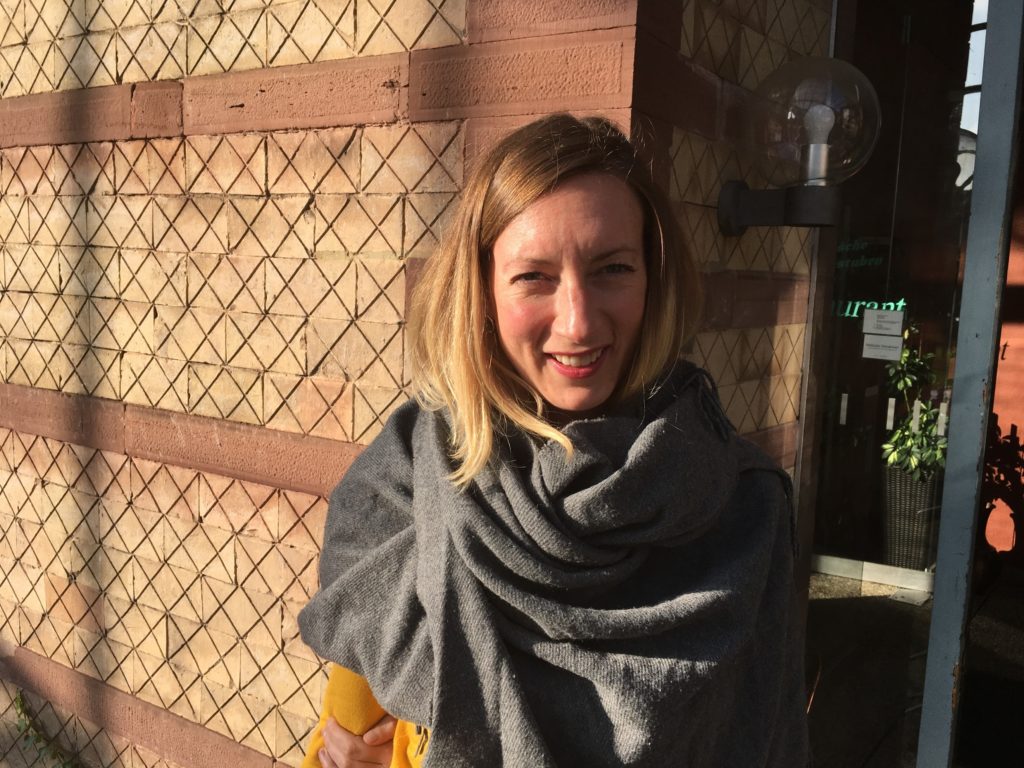
My research is an examination of a contemporary field of design practice, which could loosely be described as design in the service of government. On a global scale, we are seeing a kind of design increasingly bound up in the shaping of government policies, strategies, services, innovation, change etc., with a new set of practices derived from design being gradually absorbed and normalised by non-designers within government and the public sector. This has been accompanied by a growing field of public discourse and debate, research, and practice in the form of businesses offering this kind of design service. The examination and critique of this field has as yet been fairly minimal, and much of the research that does exist is closely aligned with the promotional interests of industry.
The focus of my study is my experience over two and a bit years of practice in a design agency in London, working with clients across the public and third sector: a particular place at a particular moment in time – and a particular organisational culture and set of practices. Understanding design as a social practice (rather than, for example, simply a method), my intention in documenting and exploring this experience is to tease out the relationship between a certain political and governance context, and the related kinds of design practice that have arisen; and to develop ways of analysing contemporary social design/ design in government practice that is more critically aware of the conditions of production.
WordPress | Twitter | Linkedin
Research outputs
Journal articles and conference papers
Bailey, J., Lloyd, P. (2016). ‘The Introduction of Design to Policymaking: Policy Lab and the UK Government’ . Proceedings of DRS 2016, Design Research Society 50th Anniversary Conference. Brighton, UK, 27–30 June 2016. pdf.
Bailey, J., Lloyd, P. (2016). ‘A View from the Other Side: Perspectives on an Emergent Design Culture in Whitehall’. Proceedings of ServDes 2016, the Service Design and Innovation Conference. Copenhagen, Denmark, 24-26 May 2016. pdf.
Bailey, J., Lloyd, P. (2017). ‘A View from the Other Side: UK Policymaker Perspectives on Design’. Design Issues. (forthcoming).
Bailey, J. (2017). ‘Beyond Usefulness: Exploring the Implications of Design in Policymaking’. Proceedings of Nordes 2017; Design + Power, Oslo, Norway, 14-16 June 2017. pdf.
Bailey, J and L. Kimbell. ‘Prototyping and the New Spirit of Policymaking’. Co-Design. 13:3, 214-226. http://dx.doi.org/10.1080/15710882.2017.1355003
Design policy, advocacy and commentary
Bailey, J. and C. Drew. ‘From Skills to Mindsets: Grappling with Complex Public Problems’. Touchpoint 9 (1): 40-44 (pdf).
Bailey, J. (2017) ‘Elements of Novelty: Designer as Policymaker’. In Barbero, S. (ed.) RETRACE: Systemic Design Method Guide for Policymaking; A Circular Europe on the Way. Allemandi: Turin. (pdf).
Speaking engagements
2017
Civic Design conference, Halle University of Art and Design, and the German Society for Design Theory and Research: ‘On The Theory And Practice Of The Social And Political In Design’
Postgraduate Design Research Symposium, Kingston University: ‘Here and there: interdisciplinarity in design’
Round table discussion, hosted by Policy Lab, Cabinet Office: ‘Design research for policy’
Nordes 2017: Design + Power, Oslo: ‘Beyond Usefulness: the Implications of Design in Policymaking’
DWP Journal Club: ‘Design in policymaking’
2016
Lab Connections, Brussels – Facilitator
Global Innovation Policy Accelerator programme, Nesta: ‘Design for Policy’ presentation (with Policy Lab)
Symposium, Konstfack Stockholm: ‘The Future of Design Education’
Hidden Women of Design, London: ‘Perspectives on design’
ServDes 2016, Copenhagen: ‘A view from the other side: policymaker perspectives on design’
Service Design in Government 2016, London: ‘Doing co-design at scale’ (with Dr Matt Fogarty, NHS England)
transmediale, Berlin: ‘(Re)positioning Maker Culture’
David Brezina, University of Reading
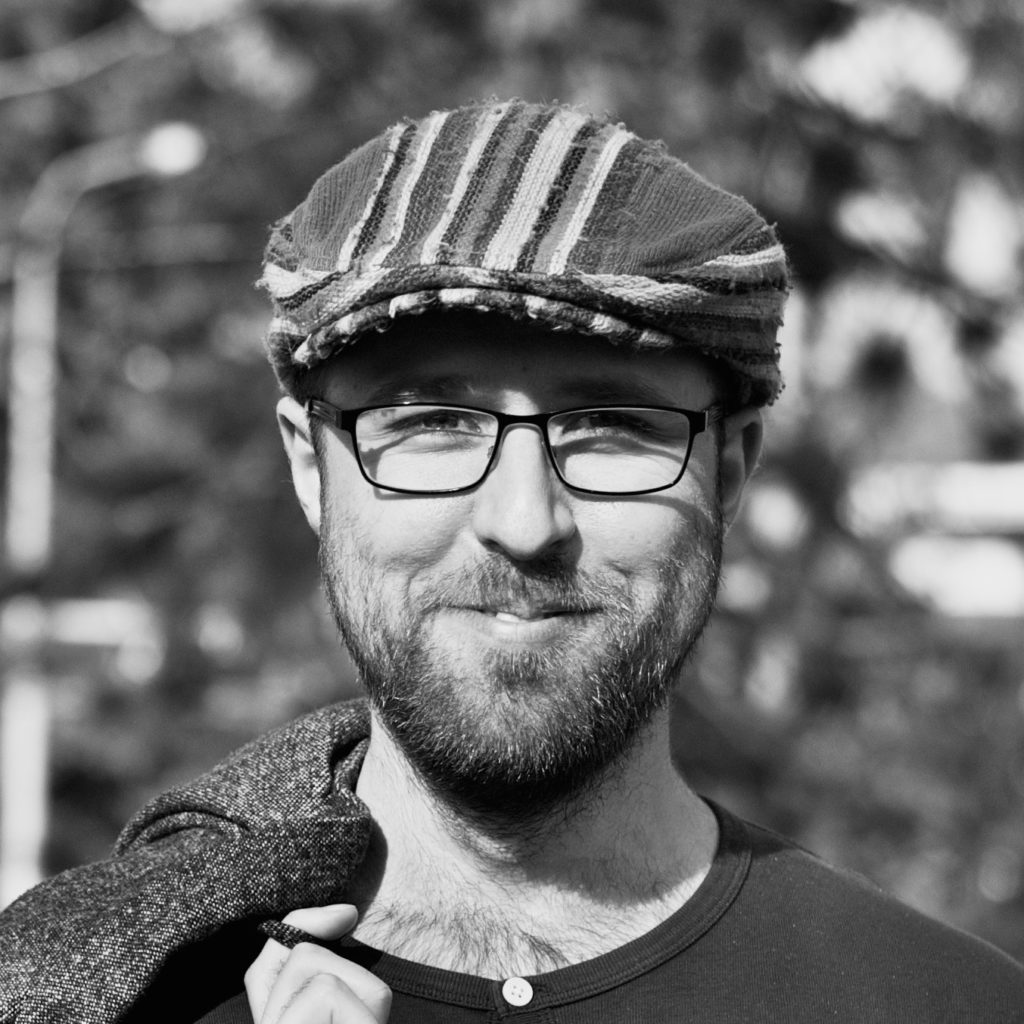
Structural analysis of text typefaces for selected world scripts: a systematic approach to stylistic consistency in multilingual environments
Letterform conventions often constitute a structure defined through similarity or distinctiveness of individual letterforms or their parts. For example, Latin-script letters ‘b’ and ‘p’ are conventionally designed to look similar – ‘b’ has a bowl similar to ‘p’ on the right side, but they differ on the left side. These kind of relationships among the letters seem to be intrinsic to each script. Furthermore, parts which are intrinsically similar are usually treated consistently by designers, particularly in text typefaces.
The aim of the proposed thesis is to determine whether there is a single structure behind the stylistic treatment of the selected world scripts (Latin, Greek, and Devanagari). This does not seem to be the case as, for example, some of the standard letter-parts from one script may not be present in another script at all. On the other hand, there may be a structural overlap between some scripts which borrowed forms from each other or used similar writing tools through their historical development.
Furthermore, there is an anticipation that different type styles will produce different structures, i.e. a script will be perceived as a set of styles defined by these structures.
Personal Profile:
David Březina is a Czech type designer and typographer, writer, lecturer, the impresario of the TypeTalks conference, and the managing director of Rosetta Type Foundry (http://rosettatype.com). He holds master’s degrees in Informatics (Masaryk University, Brno) and Typeface Design (University of Reading, UK). While typographers may know him as the designer of the award-winning type family Skolar, David has also been actively involved in writing, presenting, and conducting workshops on type and typography around Europe (notably at the University of Reading). He has designed custom typefaces for Adobe and Microsoft (with Tiro Typeworks), and other clients. So far, he has designed typefaces for Cyrillic, Greek, Gujarati, Devanagari, and various extensions of Latin.
Joyce Chan, Loughborough University

Wellness Building Information Modelling (WBim): Wellness as a building performance metric
The aim of this research is to investigate the potential of using the level of ‘wellness/happiness’ of occupants to evaluate building performance along with other environmental factors. Wellness is thought to be a subjective feeling of health [4]. It considers individual’s general functioning as a whole, including the environmental but also social and physical aspect [5]. There are many tools on the market to assist designers on efficient Building Performance Simulation (BPS) and solutions [1], and yet, designers do not have enough information about how human behaviour and occupant satisfaction is influencing our building design and energy consumption.
There are increasing needs to bridge the knowledge gap of occupants and building operators by enabling the building management system (BMS) to consider occupancy profiles independently [2]. Smart technologies is transforming the future of cities and buildings. In 2008, there were officially more devices connected to the internet than there were human beings, it is predicted that our world will have 50 billion devices by 2020 [6]. These internet of things (IoT) will allow building operators to move away from reactive and preventative approach of building management towards a more predictive and proactive mindset [3].
Can we create a ‘Wellness information’ layer in the in-use stage to assist a more dynamic building automation solution? The occupancy data can then be used to inform a more realistic profile in our early stage of design? Through BPS, how can we research, measure and predict wellness of occupants in our evidence-based design approach?
References
- Soebarto, V. 2015 Capturing the views of architects about building performance simulation to be used during design processes. Loughborough University Institutional Repository
- Robinson J.et al, 2016. Performance gap analysis case study of a non-domestic building. Institute of Civil Engineers.
- Siemens, 2019. http://www.businessinsider.com/sc/smart-buildings-are-our-future-2017-5?IR=T
- .S. Mackey, “Towards an ontological theory of wellness: a discussion of conceptual foundations and implications for nursing,” Nursing Philosophy, vol. 10, no. 2, pp. 103–112, 2009.
- Oguz-Duran and E. Tezer, “Wellness and self-esteem among Turkish university students,” International Journal for the Advancement of Counselling, vol. 31, no. 1, pp. 32–44, 2009.
- Soebarto, V. 2015 Capturing the views of architects about building performance simulation to be used during design processes. Loughborough University Institutional Repository
- Robinson J.et al, 2016. Performance gap analysis case study of a non-domestic building. Institute of Civil Engineers.
- Siemens, 2019. http://www.businessinsider.com/sc/smart-buildings-are-our-future-2017-5?IR=T
- .S. Mackey, “Towards an ontological theory of wellness: a discussion of conceptual foundations and implications for nursing,” Nursing Philosophy, vol. 10, no. 2, pp. 103–112, 2009.
- Oguz-Duran and E. Tezer, “Wellness and self-esteem among Turkish university students,” International Journal for the Advancement of Counselling, vol. 31, no. 1, pp. 32–44, 2009.
- http://www.digitalistmag.com/iot/2017/07/27/3-ways-internet-of-things-change-workplace-in-2017-05238505
Mo Dakak, University of Reading

Towards understanding inconsistency in Arabic type design and its effect on Arab readership
On the contrary to the linear development of Arabic calligraphy, the development path for Arabic type was rather a disrupted and discontinuous one. Several technical and cultural factors created challenging circumstances for Arabic type through different periods.
Technical limitations imposed by early typesetting techniques and later by machine typesetting were among the main challenges to the development of Arabic type. Adapting Arabic to these technologies forced compromises on the visual representation of the script on multiple levels.
With the introduction of the digital technologies, many of the technical challenges were overtaken. This in many cases allowed a better representation of Arabic type. However previous models continue to be widely used.
Another approach also emerged and gained popularity more recently adding to the already complex status. The approach is inspired by the structure of Latin script and usually presented as a modern way to design Arabic. Examining the current cultural context in parts of the Arab world can give more explanation to such a perspective.
This research aims to study this complex status of Arabic type design in regard to its development, contexts, its influence on Arabic readership and finally the challenges that it still faces.
Katarina Dimitrijevic, Goldsmiths

Plastics with the living voice: Visualising Plastic Ocean Pollution
KraalD: Engaging in A Socio-Material Narrative
Currently, not all landfills are on land: The planet’s oceans form the largest global landfill and are the most vulnerable and unprotected ecosystem. There is now compelling evidence to show that humanity’s impact on the Earth’s atmosphere, oceans and wildlife has pushed the planet into a new geological epoch. Plastic packaging production and consumption has quadrupled in the first decade of the twenty-first century. Contemporary marine research has revealed that synthetic polymers and plastics are toxic pollutants, and they are spread throughout the planet’s oceans.
KraalD is a socio-material narrative that engages civic and educational stakeholders with the act of bricolage to raise awareness of plastic ocean pollution. This narrative is researched and developed throughout the thesis to propose design-led responses to the super wicked challenges faced by the planet, both in the present and its futures.
Hence, the praxis conducted two participatory design engagements series situated in the UK Higher Education design environment. The KraalD practice-based green design series collaborated with external waste management groups and HE organisations. This was ignited at the University for the Creative Arts (UCA) creative residency, followed by the designedisposal seminar and X-mass tree public exposition (2014-2016). These were proceeded by the blue design series, which visually mapped and represented ideational explorations for marine plastic discard, trough do-it-with-others (DIWO) technologies.
The three “Designtransposal workshops,” held at various locations with variety of HE design stakeholders, combined design advocacy informed by marine scientific data. Closing with the Sea PET, ocean as a landfill, do-it-yourself (DIY) project, in transposing the human eye view towards the Nature other. (See Sea Anemone, 2015 https://www.youtube.com/watch?v=CRBheKGiyfg ).
KraalD, refuses to be epistemologically standardised in research topics, concepts, methods, aesthetics and its alternative jargon. The innovative methodology developed set of waste centric terms and ecocentric concepts, previously founded in my MRes in Design e.g. designedisposal tactics and new designtransposal strategies posed in PhD. Thinking creatively with things and probing innovative modes of engagement, where approached through creative reuse and design micro tactics. The social design workshop platform as an emphasised method, supported HE design dialogues with the student stakeholders, that created opportunities to inform this research.https://kraald.wordpress.com/
https://www.researchgate.net/profile/Katarina_Dimitrijevic/info
Research Outputs
Forthcoming Publications and Conference Presentations
2018, “Design and Nature”, Ed. Fletcher, K., St. Pierre., L., Tham, M., ( Dimitrijevic, K., chapter contribution) for the forthcoming book by Routledge.
2018, “Opening the Bin Anthology”, Ed. Ek, R., Lund University, (towards chapter contribution) for the forthcoming book by Cambridge Scholars.
2017, Royal Geography Society, RGS-IBG, London. “Treating waste as a resource” paper presentation. “KraalD: Plastic Reuse Strategy”.
2017, “The Lives and After Lives of Plastics”, Political Ecology Research Centre, (PERC), New Zealand. Dimitrijevic, K. Audio visual presentation “Plasticized” http://perc.ac.nz/wordpress/panel-4-packaging-lcas-and-design/
2017, Academic workshop, “Opening the Bin”, Lund University, Sweden. Paper presented.
2016, Graduate Festival, Panel Chair: “Design for Behaviour Change”, Goldsmiths UoL
2015, Sustainable Innovation 20th International Conference: The Centre for Sustainable Design(CfSD)UCA. Paper presentation. http://cfsd.org.uk/events/sustainable-innovation-2015/
2014 & 2015 PhDByDesign-Goldsmiths, UoL. Presented practice research.
2014, Sustainable Innovation 19th International Conference: Organised by (CfSD) UCA, UK held at KADK, Copenhagen, Denmark. Paper presentation. http://cfsd.org.uk/events/sustainable-innovation-2014/
Action Engagements: Exposition, Workshop, Seminar and Expedition
Forthcoming Sept and Oct., 2018. On the Board “Sail Britain”, environmental plastic pollution expedition, for the east coast UK.
2016, KraalD, Boki wall lights selected for the permanent collection for Etsy headquarters, NY, USA.
2016 KraalD/UCA/Surrey County council/ X-Mass tree exhibit, The Friary Shopping Center, Surrey.
2015, PhDByDesign, Designtransposal workshop with graduate students Goldsmiths, UoL.
2015, Falmouth University, Designetransposal workshop with Sustainable Product Design Department students Penryn Campus, Cornwall, UK.
2015, UCA: Creative Challenge, Designetransposal workshop, Ugly Duck 47- 49 Tanner Street, SW1 London
2015, Designedisposal Seminar UCA Rochester, Fort Pitt, Rochester, ME1 1DZ
YouTube/Vimeo Channel Designedisposal seminar
2014/15 UCA, KraalD, MA CJ & MA Design Creative residency, “X-Mass Tree“, UCA Rochester, Fort Pitt, Rochester, ME1 1DZ
Tot Foster, Open University
Grassroots video production in small charities
My PhD research aims to bring aspects of design thinking to the problem of producing better videos at the grassroots in small UK charities. By ‘grassroots’ I mean production which involves non-professionals, and which happens from the bottom up.
So what is this problem with production? My initial research has shown that only few small charities actually make videos, and when they do they are often not of good technical quality, or do necessarily effectively serve their purpose. Sometimes production depends on an enthusiastic volunteer or staff member, and when they move on production skills are lost.
But being able to produce good videos could potentially make a huge difference to small charities. In the age of austerity, charities are suffering financially, particularly those who depend on income from local authorities. One way to promote their work, get noticed, and compete for resources is through effective digital communications. Academic sources and commentators agree its now high time for charities to engage more effectively with digital, and being able to produce your own content is a vital aspect of this.
This research focuses on just one aspect of content – the production of video. For small charities the cost of outsourcing production is too great, so developing their own capacity would be useful. This research aims to develop a model production process which can support small charities in making videos at the grassroots – either internally to the organisation, or with outside volunteers. The ultimate goal of this process is to help produce videos which are well suited to their needs and audiences, and for minimal resource.
The key principles from design to be adapted to this process are collaboration and iteration. Collaboration involves stakeholders in a charity – this might be staff, service users, or volunteers – playing to their strengths, sharing a vision of what they are trying to achieve and keeping talking; articulating key factors such as message, audience, aim and style. Iteration is important so that the team can assess, review and re-work their ideas and the video – thereby creating a refined end product and developing knowledge and capacity within the organisation through that learning.
My research so far has focused on discovering what production is happening in small charities now, and where to focus attention to get the greatest improvement in production practice. Mixed methods are being used to examine data which has been gathered from a set of 15 interviews with charity managers, from YouTube channels, from existing training available online, and from my own practice as a producer. The next stage is developing a process to take into 3 charities as case study production projects, which I will facilitate. This process will have two aspects – firstly a series of team discussions at key moments. These will emphasise areas of production that have been shown by the discovery stage to be tricky. Secondly there will be a style reference guide which offers examples of charity videos to watch online to stimulate discussion and inform production decisions. After completing my PhD I would very much like to create a short training course, possibly a MOOC.
Gionata Gatto, Loughborough University
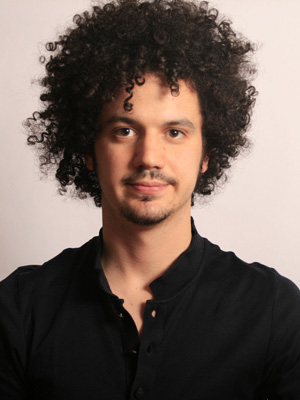
The research investigates the role of Design in the communication, data visualization and public engagement on Life Sciences. Focusing on the scientific branch of Plant Neurobiology as the main case study, the research probes novel Designer/Scientist interaction paths involving the use of specifically designed plant-inspired experiments. Aim of the research is to finally identify which Design tools and methods could be appropriate and useful to the development of Life Science inspired Design projects.
Marije de Haas, Loughborough University
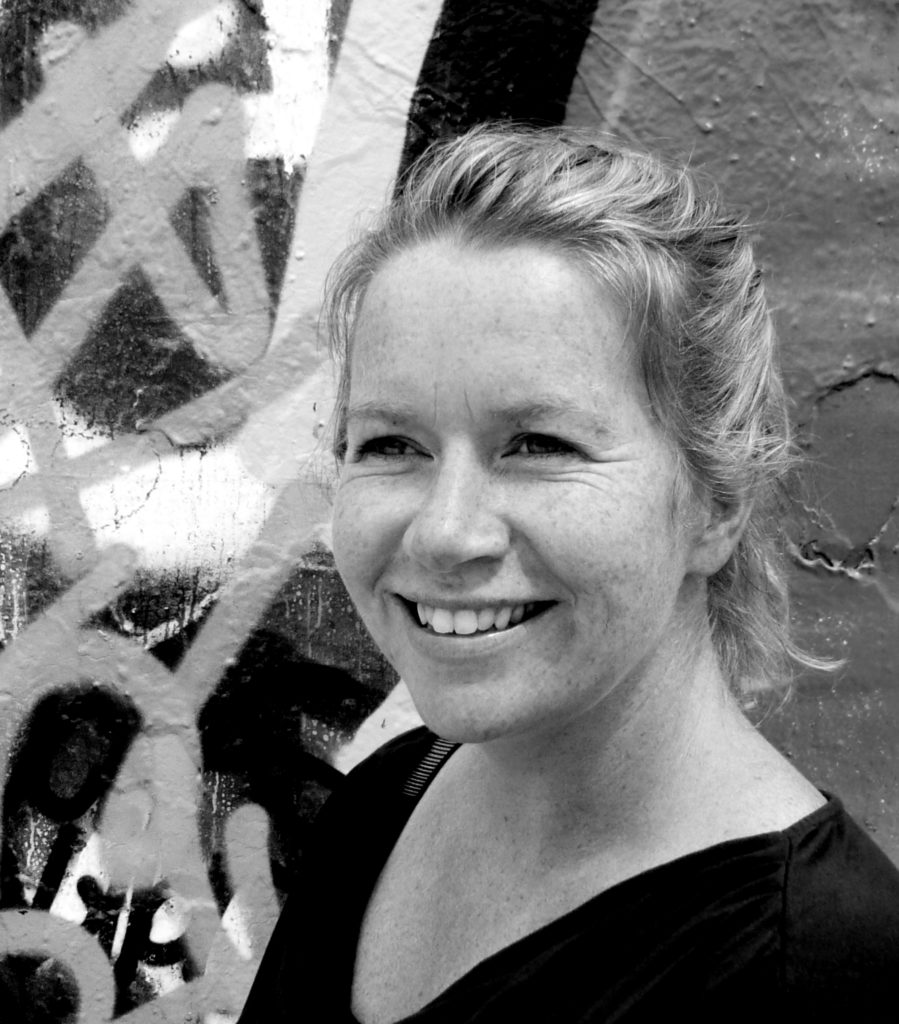
A dignified death for dementia patients
Euthanasia in dementia is a difficult request that is almost never adhered to. My research explores why this is the case, and how design can help to open up the debate and support decision-making for euthanasia in dementia.
Blog/Portfolio: http://floda31.com/marije/
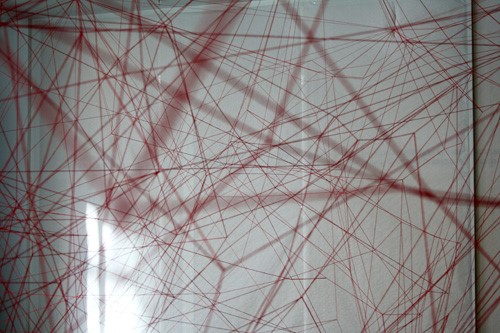
Liam Healy , Goldsmiths
Empirical Speculation and Urban Disasters: Prototyping Futures in The Jungle
This practice-led research concerns the role of design (and by implication designers) in the so-called ‘refugee crisis’. By designing and deploying research devices, this project develops a speculative method to explore how design might be mobilised and enacted to “design unlikely futures” in crisis, given the political, material, technological and social constraints placed on those who experience it first hand. In doing so it attempts to address a series of speculative questions: what is something (designers, objects, refugees, collaborators, cameras, bicycles, devices, and so on) capable of, both in terms of knowledge production and in acting in the worlds being engaged with and studied. This is done by engaging empirically in a number of sites, including the ‘Jungle’ camp in Calais, France, the island of Lesvos in Greece and the more immediate and mundane sites of design practice such as, the workshop, studio and exhibition space.
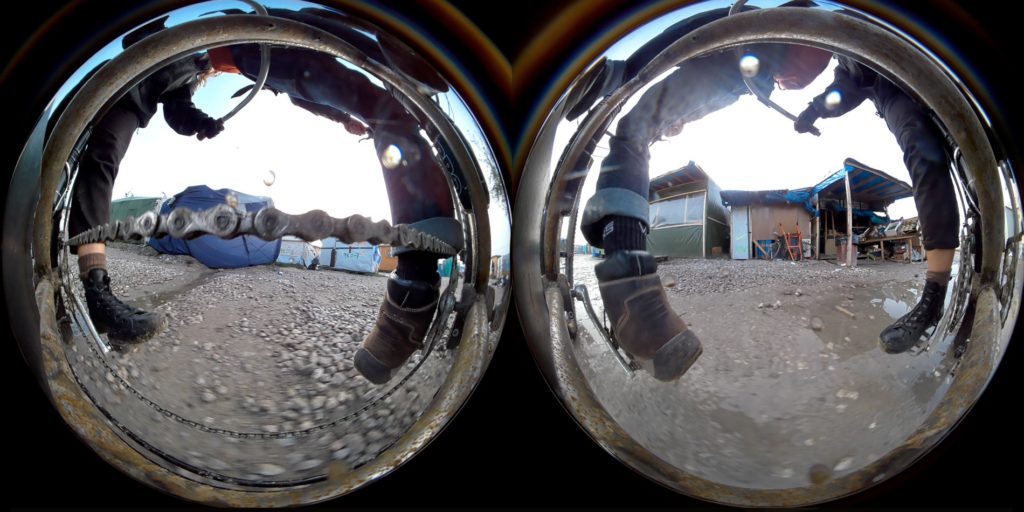
Alex Heslop, University of Reading
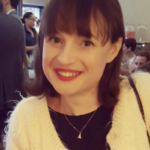
Exploring the Design of Corporate Annual Reports in Britain, 1980-2000
The annual report is a long-lived mechanism of corporate accountability and governance. Economic historians have dated the formal regulation of financial reporting in the United Kingdom to the nineteenth century, when companies in some economically significant industries, such as banks, insurance companies and railways, were subject to statutory reporting requirements. These companies published annual (and in some cases semi-annual) financial statements so that boards of directors could both demonstrate how investors’ capital had been used and could justify payments of dividends. It was not, however, until 1967 that annual reports became a fiduciary requirement for all UK limited companies and a prime means of corporate communication. Since then, annual reports have included a comprehensive report on a company’s activities and financial performance throughout the preceding financial year and have been sent to current and potential shareholders and stakeholders.
This research examines annual reports produced by British design companies in the 1980s and 1990s, a period of significant growth in both the number of companies using external design services to produce their report and in the number of reports being printed. It asks firstly, to what extent annual reports contributed to a changing political and economic system in Britain between 1980-2000 and, secondly, to what degree did designers aid in delivering that contribution.
The annual report has been largely neglected in histories of design. The restraint of the existing literature remains unchallenged, particularly that which deals with design and visual matters. Furthermore, despite the significance of the political and economic changes in 1980s Britain, and despite the fact that annual reports were an increasingly lucrative business for British design companies within the late 20th century, little historical attention has been given to the relationships between social changes and the design of corporate annual reports. Although some historians and commentators have recognised that the increase in market activity in the late 1980s went hand-in-hand with an increasing self-questioning by businesses of the importance of corporate identity, there is little critical analysis of how annual reports contributed to changing political and economic structures in Britain between 1980-2000.
Most writing concerning annual reports has been confined to the fields of finance and business and within the research that has been written by design specialists, the analysis is equally circumscribed at the at expense of the broader contexts in which the annual report operated. There is little writing from within the fields of design that looks beyond ideas of success and towards wider contexts at work. This research aims to begin to shift the imbalance in the fields from which the established literature has emerged by offering a design historical approach that combines the critical enquiry of a historian, with a knowledge of design processes. In asking after relationships between political and economic contexts, annual reports and designers this research aims to begin to fill the lack of knowledge surrounding the design of annual reports in the late twentieth century. Moreover, it is hoped that the combination of object analysis with interviews will bring new methods to histories of finance and accounting and new insights into the significance of the annual report within design history.
Erika Renedo Illarregi, Open University
Co-design for mental health: an interdisciplinary study on the impact of design thinking on mental health.
Erika’s project is investigating co-design within mental health. In particular, it aims to understand the experiences of people with mental health problems when they engage in designing, the changes they may go through as a result, and why. The project is a collaboration with a mental health charity in London, where fieldwork is currently take place. It has been motivated by previous experiences Erika had when facilitating co-design projects with people with mental health problems. The concept of uncertainty is being explored as a potential explanatory factor for why change occurs in this context, and also to motivate tools to use in co-design workshops. With a strong focus on the construction of theory through design research and abductive reasoning, other explanations may emerge from the collaboration as data gathering takes place, and the aim is to identify the most plausible explanations to what participants experience and is observed.
Borna Izadpanah, University of Reading
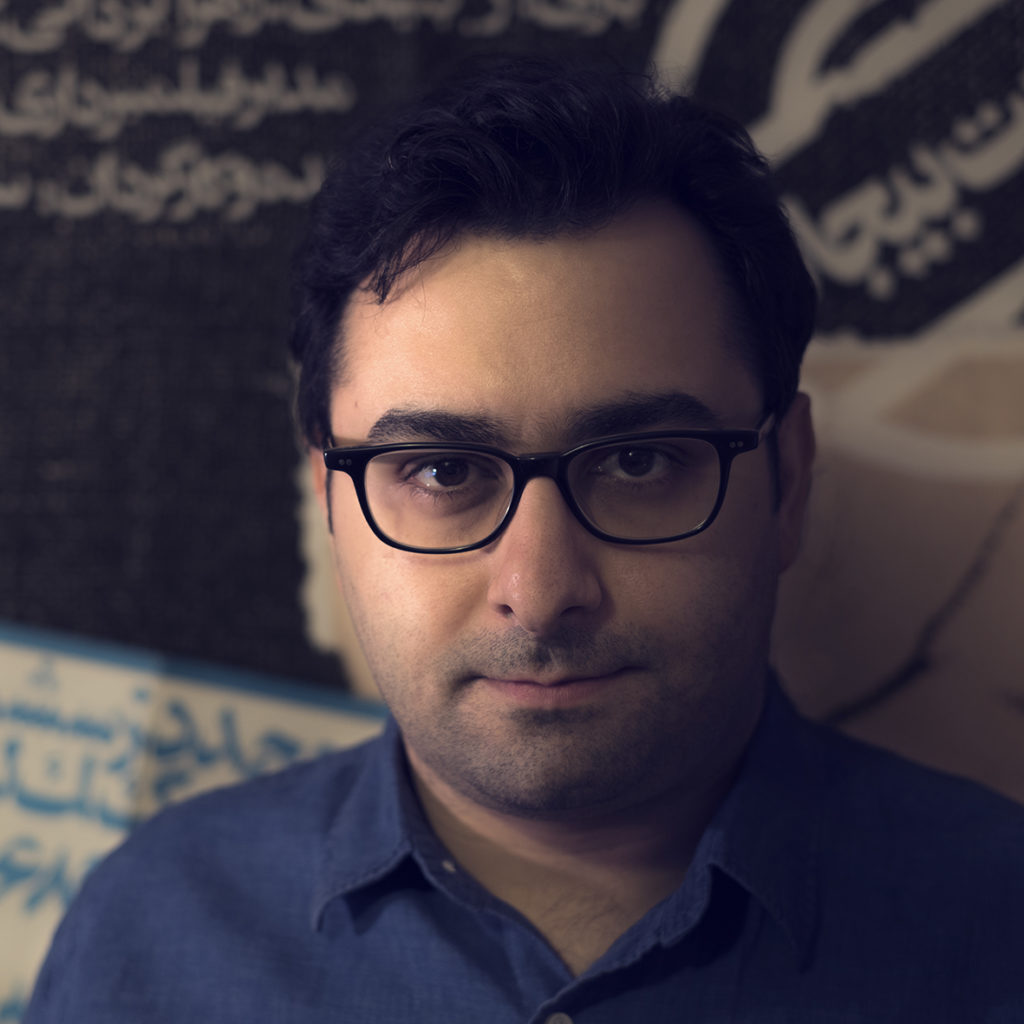
The typographic representation of the Persian language
Borna Izadpanah is supervised by Gerry Leonidas and Professor Fiona Ross.
This thesis explores the typographic development of the Persian language written in extended Arabic script, from the late 16th-century when the first attempts to print Persian with movable type occurred in Europe to the 1979 revolution in Iran, which for at least two decades suspended the typographical progress that had been initiated in the preceding years. It investigates various circumstances that have affected the textual identity of the Persian language including the impact of printing technologies and the roles that the Persian language has played in different communities. During the period under investigation, Persian was cultivated as a scholarly subject for European orientalists, as the language of ruling minority in India and as the official language in Iran. Persian literature also played a significant role in the Ottoman lands, which instigated printing and publishing activities beyond these borders that persisted despite the political and social changes in the 20th-century. This thesis aims to combine the analysis of printed letterforms and knowledge of writing styles with considerations regarding the contexts in which Persian texts were published. The examination of the visual aspects of Persian publications is informed by important factors such as their intended audience and the often unconventional approach of European printers. The emergence of Persian studies in Europe during 16th-century coincided with a series of efforts mainly for missionary activities to print books to aid Europeans in learning the Persian language. It will be shown that European linguists and printers often introduced experimental methods for printing Persian to overcome the technical constraints of the movable type printing, and yet also to find a system that they considered to be a more comprehensible approach for the students of that ‘complex’ script.
In the first quarter of the 19th-century, the introduction of Persian printing to Iran marked the beginning of vernacular typography which resulted in some of the major typographic achievements in Persian printing. At the same time, other significant activities at the Bulaq Press in Cairo proved that the local craftsmen had the knowledge and ability of publishing books that successfully echoed the visual culture of various language communities that use the Arabic script. The introduction of lithographic printing in the 1830s – a printing method that enabled the scribes to reintroduce the scribal conventions that were held in a high regard – gradually ended the short-lived phase of typesetting in Iran.
In the 20th-century the visual identity of the Persian language was affected by hot-metal typesetting technologies which once more restored the European role in the production of Persian publications. The need for the rapid production of newspapers during the Iranian Constitutional Revolution (1905–11) left little room for native involvement in the design of Persian types and a simplified European type style of naskh defined the identity of modern Persian typesetting. Through the efforts of a few individuals – most importantly Ḥossein Haqīqī – Persian typography found a new identity which has ever since remained relevant.
The objective of this thesis to provide an original contribution to the field of Persian printing history by means of extensive archival research and a critical review of primary and secondary sources. It will explore hitherto insufficiently scrutinised archives and often overlooked primary material. It will therefore interrogate the established narrative to offer a more accurate account of the significant typographic development of the Persian language from 16th to the late 2oth centuries that has largely remained undocumented.
Victor Jeganathan, Loughborough University
A critical evaluation of interaction design and technology to facilitate a digital assistive device for visually impaired runners
Marie Lefebvre, Loughborough University
An investigation of the factors influencing repair propensity
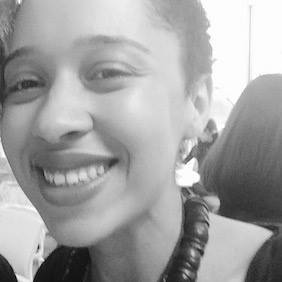
To facilitate the transition towards the circular economy, design strategies have been put forward. Yet, they do not all respond appropriately to the need to support the consumer to change and evolve. Design for Sustainable Behaviour (DfSB) is one of the tool which through consumer behaviour and practice theory attempt to develop solutions which can support the consumer to redefine his role and associated pattern of behaviour. This thesis uses two behavioural frameworks – one fix, one cyclical – to explore the adoption of the repair of small electrical items by users. Repair was chosen as it is one of the strategies to facilitate the transition towards the circular economy that can be performed by the user. Small electrical items were chosen because every year an estimated 2 million tonnes of electrical items are discarded by householders and companies in the UK (HSE 2014). The research embrace pragmatic constructivism and use the combination of qualitative and quantitative methods.
Poster Presentations
Lefebvre M.,Lofthouse V., Stevenson N. (2015), ‘ Design for Sustainable Behaviour in a Circular economy– displayed at Goldsmith, Annual Postgraduate Poster Competition (winner) and Lancaster, UK: Imagination Lancaster Design Ph.D Conference
Lecture
Guest Lecture Design for sustainable Behaviour and Repair. In What Do I Need To Do To Make It OK? A symposium on damage and repair, at Farnham, UK : UCA Farnharm. (a.y. 2015-2016)
Guest Lecture SWOC analysis and connecting the dots backwards, at Loughborough London, London (a.y. 2014-2015, a.y. 2016-2017)
Public Engagement
- (Workshop organisation) associated repair events for the Green Festival of making and mending. Leicester UK : Footpaths – April 2015 – October 2015
- (Workshop Participation) Lufbra Service Jam. Loughborough, UK: Loughborough University, February 2015.
- (Festival Organisation) The Green Festival of Making and Mending. Leicester, UK : Footpaths Leicester – 31 October 2015
- (Press) M.Lefebvre (2016) Restart Host Profile. In Restart. London, UK. https://therestartproject.org/restart-party-hosts/restart-party-host-profile-meet-marie
- (Radio Interview), BBC Leicester, (2017) Repair events in Leicester.
- (Radio Interview), 103 The Eye (2017), Melton Space.In 103 The Eye. Melton Mowbray, UK
- (Radio Interview) Restart Radio (2017) Restarting in Leicester. In Restart. London, UK – https://therestartproject.org/podcast/leicester/
- (Press) M.Lefebvre (2017) Why help is the best glue?. In Thoughtful. London, UK. http://www.thisisthoughtful.com/3003/help-glue
- (Module participation), The Old Rectory Social Innovation UX Master Project, Loughborough UK: Loughborough University, March 2017- May 2017
Follow these links if you want to find out more
Academic profile: http://www.lboro.ac.uk/departments/design-school/staff/marie-lefebvre/
Linkedin: https://www.linkedin.com/in/mlglefebvre/
Twitter: https://twitter.com/thisismarlefeed
Leicester Fixers and the Restart Project: https://therestartproject.org/groups/restarters-leicester/
Francesco Mazzarella, Loughborough University
Francesco was awarded his doctorate in the summer of 2018. Please see below for details of his research whilst he was a Design Star student:
“Crafting Situated Services: Meaningful Design for Social Innovation with Textile Artisan Communities”
The mainstream ecosystem has proven unsustainable in terms of livelihood, environmental stewardship, cultural heritage, and social equality. To alleviate these problems, a range of top-down strategies has been deployed, but they are often ineffective in addressing the specific needs and aspirations of diverse contexts. On the other hand, bottom-up initiatives started by communities also face organisational and resource limitations that prevent them from becoming resilient. Within this context, service design for social innovation has become a well-established human-centred, strategic and systemic approach to tackling such challenges. However, designers have put much emphasis on the use of fixed toolkits that result in one-size-fits-all outputs. Instead, this thesis argues for a more situated and embedded approach to service design. With this in mind, the aim of the research was to explore new roles, purposes and methods the service designer can adopt to activate communities to transition towards a more sustainable future. For this purpose, participatory case studies were undertaken with two textile artisan communities (in Nottingham, UK, and Cape Town, South Africa), chosen as relevant cases of design, production and consumption. As a result of both cases, the designer activated the artisans, previously working in an isolated and precarious condition, to become a community and outline a situated service proposition that embeds a shared vision for a sustainable future. Building on emerging anthropological approaches to service design, the thesis contributes an original methodological framework, which equips the service designer with cultural sensibility when entering communities, aiding in making sense of sustainable futures, facilitating the co-design of situated services and the activation of local legacies. In this, the investigation evidenced the diverse roles – cultural insider, storyteller, sensemaker, facilitator, and activist – the service designer plays throughout a social innovation process. Furthermore, the thesis emphasised that the mastery of the designer lies in the skill of tailoring his/her approach to specific contexts in order to craft situated services that are meaningful to the communities using them.
Keywords: service design; social innovation; sustainable futures; design anthropology; textile artisan communities.
Publications
Mazzarella, F., Mitchell, V., May, A.J. & Escobar-Tello, M. C. (forthcoming). Weaving the Threads: Service Innovation with Textile Artisan Communities. In: Proceedings of ServDes 2018: Proof of Concept. 18-20 June 2018, Politecnico di Milano, Milan, Italy (accepted).
Hirscher, A-L., Mazzarella, F., & Fuad-Luke, A. (forthcoming). Socialising Value Creation through Practices of Making Clothing Differently: A Case Study of a Makershop with Diverse Locals. Fashion Practice: The Journal of Design, Creative Process & The Fashion Industry (accepted).
Mazzarella, F., Mitchell V., and Escobar-Tello M.C. (2017) Crafting Sustainable Futures. The Value of the Service Designer in Activating Meaningful Social Innovation from within Textile Artisan Communities. The Design Journal, 20:sup1, S2935-S2950.
Mazzarella, F., & Brass, C. (2017). Great Expectations for the O-Shaped Designer. IED Journal (Online) Available: http://www.institution-engineering-designers.org.uk/Article/Features/greatexpections-for-the-o-shaped-designer
Mazzarella, F., Escobar-Tello, M.C., and Mitchell, V. (2016). Moving Textile Artisans’ Communities towards a Sustainable Future – A Theoretical Framework. In: Lloyd, P., and Bohemia, R. (eds.). In: Proceedings of DRS2016: Design + Research + Society – Future-Focused Thinking. 27-30 June 2016, University of Brighton, UK, pp. 3961-3982.
Mazzarella, F., Escobar-Tello, M.C. and Mitchell, V. (2015). Service Ecosystem: Empowering Textile Artisans’ Communities Towards a Sustainable Future. In: Proceedings of Nordes 2015: Design Ecologies. 7-10 June 2015, Konstfack University, Stockholm, Sweden.
Brass, C., & Mazzarella, F. (2015). Are we asking the right questions? Rethinking post-graduate design education towards sustainable visions for the future. In: Proceedings of 17th International Conference on Engineering & Product Design Education – Great Expectations: Design Teaching, Research & Enterprise. 3-4 September 2015, Loughborough Design School, UK.
Mazzarella, F., & Engler, R. (2014). Self-production and Craft: Advanced Processes for Social Innovation. In: 5th International Forum of Design as a Process: The Shapes of the Future as the Front end of Design Driven Innovation. 18-20 September 2014, Tecnologico De Monterrey, Guadalajara, Mexico.
Mazzarella, F., & Peruccio, P. P. (2013). Self-production: A Human Centred Design Process. The Sustainable Future of Self-production through a Humanistic and Participatory Process. In: 4th International Forum of Design as a Process, Diversity: Design/ Humanities. 19-22 September 2013, Minas Gerais State University, Belo Horizonte, Brazil, pp. 266-276.
Follow these links if you want to find out more
- Academic Profile at Loughborough University: http://www.lboro.ac.uk/departments/design-school/staff/francesco-mazzarella/
- Linkedin: https://www.linkedin.com/profile/preview?locale=it_IT&trk=prof-0-sb-preview-primary-button– Twitter: @FraMazzarella
- Publications on ResearchGate: https://www.researchgate.net/profile/Francesco_Mazzarella2/contributions
- Member of the MODE UNCUT network: https://modeuncut.com/
Helen McGilp, Open University
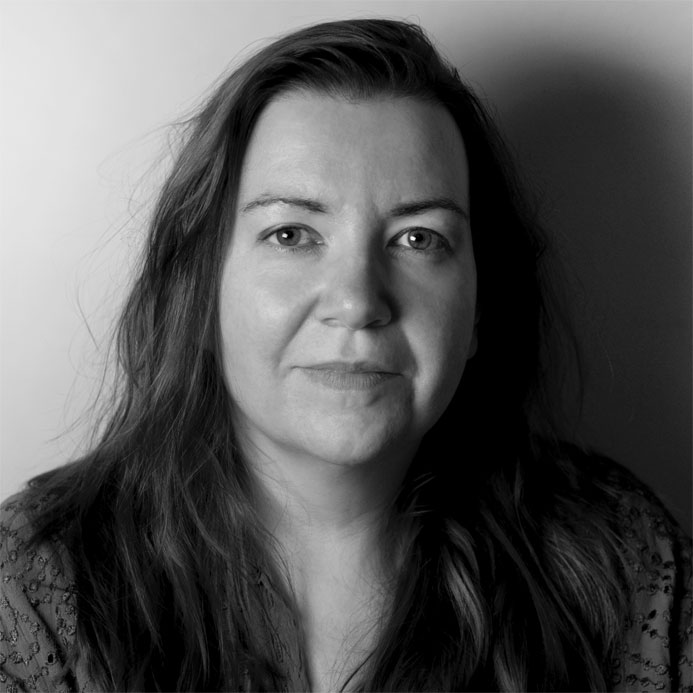
Recording in the fashion design process
For my research, I am looking at methods adopted in the fashion design industry for recording, analysing and articulating the early stages of the design process. This builds on earlier work I have undertaken looking at recording the design process within an educational context on a design Masters Fashion programme.
Within Fashion, little is written or even spoken about the design process, with most publishing focusing on the final outcome.
As a driver for an industry that revolves around a constant cycle of change, it is perhaps surprising that Fashion Design does not have a culture of recording and evaluation to underpin future design development.
The design process in Fashion is a relative newcomer to academic publishing and, although this is an area addressed within other design fields such as architecture and product design, most coverage within Fashion is sparse and anecdotal.
I am looking to better understand and model the authentic design process within fashion. As part of this, I will be looking at the ways designers record and capture that process, and how they might use those recordings to enhance areas such as creativity, idea generation, re-use of design elements and process efficiency.
Andrew McIlwraith, University of Reading
Better museum maps: how can museums improve the design of their printed guide maps to improve the visitor experience?

Many, if not most museums, especially larger ones, produced printed guide maps for visitors. Even at a time of rapid and innovative developments in digital guide and navigations systems, printed maps remain a popular choice among museum visitors to help them make the most of their visit.
This research considers first how and why museum visitors use museum maps: what do they want from them, and how they use them – and the reasons they have for not using them. It then considers how map designers and providers meet these needs, that is, the graphic devices and techniques they employ on maps to provide information that is clear and comprehensive.
The research draws on existing research in related fields: wayfinding, museum and exhibition design, and museum visitor behaviour to consider the role of museum maps in the visitor experience.
Using largely qualitative research techniques, museum visitors are interviewed about their use of, experiences of and attitudes towards museum maps they have used (or not used) when visiting museums. Similarly, their experiences of and attitudes towards digital alternatives (websites, apps and multimedia guides, for example) are investigated.
The research then consists of two studies comparing prototypes of map for a museum. The first investigates the effect of map design on wayfinding performance in a museum, and then also investigates user preferences for the two different designs, with interviews in which study participants are asked to consider the relative clarity and usefulness of each design. A follow-up study to this considers two more prototype maps that include design features that appeared to be significant indicators of user preference from the first study.
The aim of the research is to provide insight into what museums and designers should consider when producing guide maps for their museums, while recognising that individual museums have unique characteristics, and varying visitor demographics. It will also consider areas of further research that could contribute to the improvement of user maps; of wider applications of the research finding (maps and guides in environments other than museums); and the role of such printed information in an increasingly digital world.
Please read Andrew’s blog post about wayfinding at the V&A.
Tom Morton, Open University
Tom Morton is undertaking PhD research with the Open University under the title ‘Gentrification and Community-led Design: An arts based exploration of grass-roots perspectives’. This research seeks to explore community responses to regeneration and gentrification with the aim of understanding and documenting the practice and value of community-led projects.
This project will employ arts-based methodologies developed by New Vic Borderlines and Keele University, usually referred to as cultural animation, in order to explore and evaluate the ability of community-led design initiatives to facilitate the building of a public’s capacity to tackle social/spatial issues associated with their built environment and services.
The findings of this project can contribute to design research and the advancement of knowledge about community-led design. The research can also contribute to the development of design research methods by its exploration of arts based perspectives (drawing on cultural animation). Finally, it is hoped that the research can also help co- create design solutions, by helping communities develop their capacity to respond to the negative aspects of gentrification.
Elena Papassissa, University of Reading
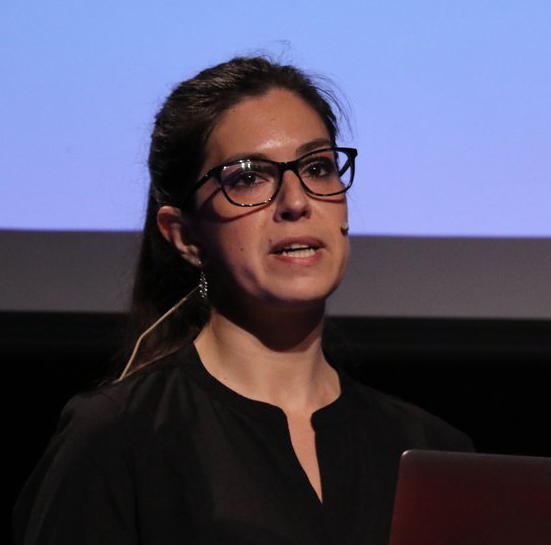
Armenian typefaces from 1840 to the present: traditionalism, Latinisation and the search for identity through changing technologies
Like many nations that have gained their independence fairly recently, Armenia struggled to preserve its cultural identity, particularly when split between Turkey and Russia. The same endeavour had to be pursued by the Diaspora, spread amid Western culture. This inevitably had consequences on the Armenian script, as Western typographic trends and changes in type making and typesetting technology were bound to influence the design of Armenian typefaces, both in Armenia and abroad.
The impact of Western influence and the beginning of Latinisation of the Armenian script have therefore initiated the scope of this research. A new Armenian typeface style, upright rather than slanted, with some lowercase letters integrating distinct features of the Latin script, made its first appearance in Paris in 1855. The scope extends to the twentieth century, as digital technology has increased the production of new typefaces and made the design of new weights easier.
The paucity of secondary sources means that the main core of this study relies on the analysis of primary sources. The study thus aims to contribute to bridging the substantial gaps in existing literature, and to the correction of erroneous information. The research examines the effects that shift in the technology of type-‐making and typesetting and the adaptation of established typographic norms for Armenian documents had on the design of Armenian typefaces. The dialogue between the Armenian script, its typographic implementation, and the type-‐making and typesetting influences are critically assessed through selected case studies by comparing the artefacts at key points of the development of Armenian typography and by identifying letter-‐level and typeface-‐level characteristics. This study also evaluates the extent to which Western typographic trends have influenced the design of Armenian typefaces, and whether particular developments of letter shapes and composition of Armenian correlate with changing historical and political conditions.
As the core of the study relies on the analysis of primary sources, travelling and prolonged stays in places where specific items and documents might be found was essential. This would never have been possible on my personal budget as a PhD student. The Research Training Support Grant from AHCR Design Star – Student Development Fund (SDF) was what unlocked my opportunities of research.
Thanks to this grant, I was able to access unique materials at the Bibliothèque Nationale, and at the Nubarian Library and Archives in Paris – a non-‐profit organisation which provides open access to researchers and public, and to visit the Viennese Mekhitarist Library and Archives – a collection held by a religious community, the Österreichischen Nationalbibliothek, and the Österreichischen Staatsarchiv in Vienna.
I have also visited the Smithsonian Archives in Washington DC, and the Museum of Printing in Haverhill, MA. Furthermore, a research trip to Armenia gave me the opportunity to discuss the early digital scene with Armenian type designers. This more recent history has been explored through interviews and access to personal archives of living designers.
Good progress in the research has enabled me to take part in international conferences, such as ATypI. The Calouste Gulbenkian Foundation awarded me the ‘Short Term Grant for Armenian Studies’ to attend and to speak at this conference. My talk was on an important topic of my ongoing PhD research: ‘Armenian typefaces as expression of national identity: the introduction of a newly fashioned Bologir typeface in the second half of the nineteenth century’.
The PhD project is supervised by Mr Gerry Leonidas and Professor Fiona Ross.
About
Elena Papassissa is a PhD researcher and a type designer with expertise in Armenian script culture, based in London. Since 2012 she has been working as a type designer for various clients mainly from the USA and the UK, and she has been intern and consultant for the Monotype archives in Salfords for a couple of years, before being awarded a Design Star (AHRC) scholarship to take a PhD at the University of Reading.
She holds a bachelor’s degree in Graphic Design and Visual Communication and an MA in Communication and Design for Publishing from the ISIA Urbino, and an MA in Typeface Design from the University of Reading. Elena is a member of the ATypI and of the AGBU Young Professional (YP), a non-‐profit organisation involved in promoting the Armenian identity and heritage around the world.
www.elenapapassissa.it design@elenapapassissa.it
Public Engagement
Speaker at HWOD (Hidden women of Design), London, UK (November 2017)
Topic of the speech: ‘Designing Armenian typefaces: Researching the past to inspire the present’
Speaker at ATypI (Association Typographique Internationale), Montreal, Canada (October 2017)
Topic of the speech: ‘Armenian typefaces as expression of national identity: the introduction of a newly fashioned Bologir typeface in the second half of the nineteenth century’
Featured in The Monotype Recorder ‘No more Tofu’. The Monotype Studio, London, UK. Issue Five/Summer 2017, in pages 37-‐50
Armenian workshop conducted at the MA type design course at the University of Reading, UK (2017)
Matthew Plummer-Fernandez, Goldsmiths
Making algorithms public: rendering visible the operations and politics of algorithmic systems through critical design.
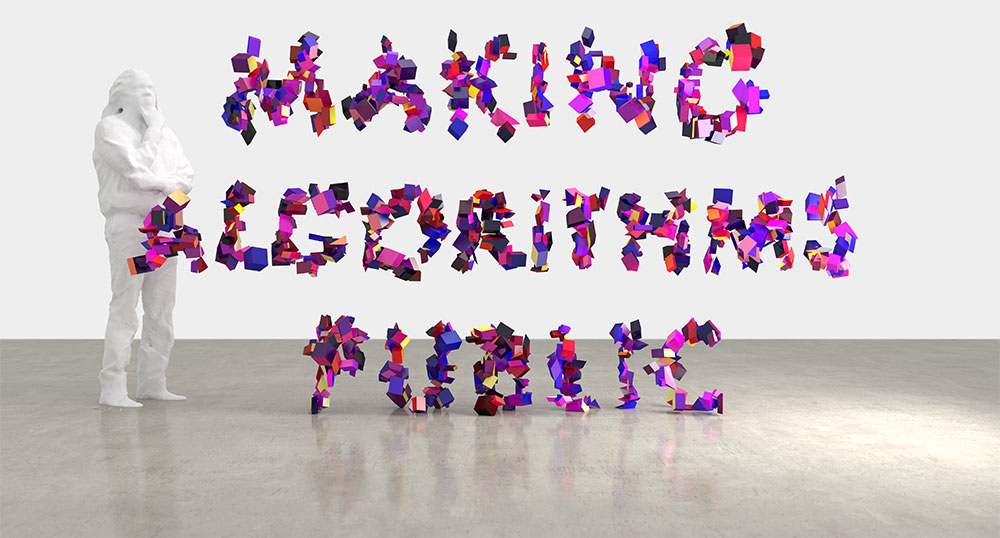
Rachel Warner, University of Reading
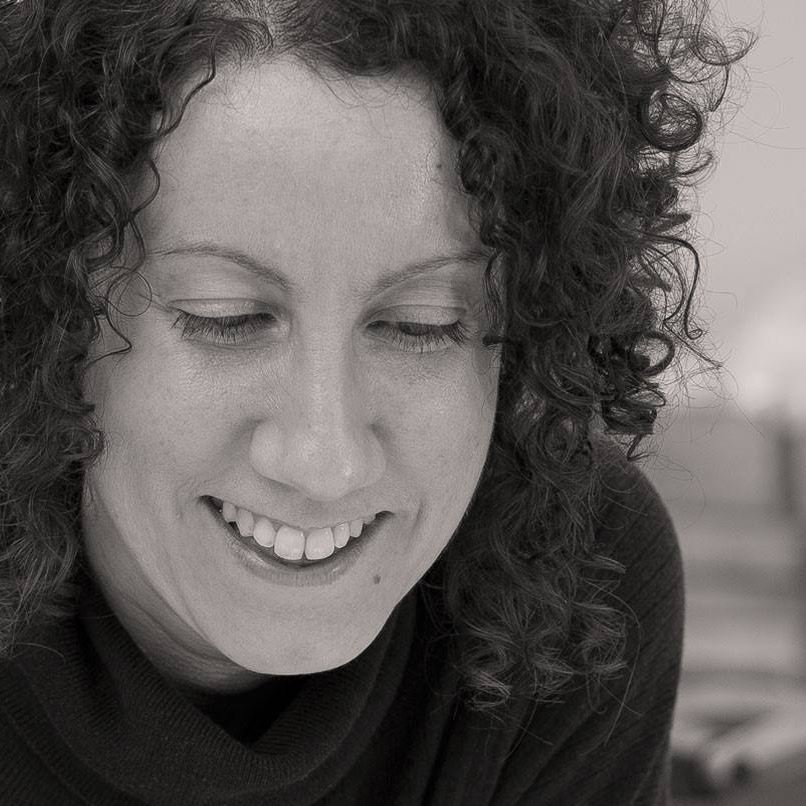
The designs and design processes used for information materials aimed at facilitating planning ahead for housing in later life
The focus of this research is on the existing designs of, and the design processes for, information materials produced for the public about housing in later life. Many producers of these information materials are not-for-profit organisations (‘not-for-profits’). The not-for-profit sector concerned with housing in later life is of particular interest because one of the efforts of such organisations is to provide clear and impartial information to the public to assist with housing decisions. The information materials produced can play a significant role in this effort by imparting information with the potential to facilitate a person’s progress towards planning ahead for appropriate housing outcomes as they age.
The design process is a key factor contributing to the effectiveness of an information material. Existing literature on design within organisations emphasises the value of adopting ‘design’ throughout an organisation’s culture, and often seeks to promote the idea of ‘design thinking’ to drive the organisation’s values, services, and activities. Alternatively, studies looking at design process as a practice to produce artefacts focus on professional designers within organisations. What is relatively less explored are the design processes used by non-designers, including employees of not-for-profits, to produce information materials for use by the public.
This research, therefore, asks the questions: 1) ‘What are the designs of existing information materials for planning ahead for housing in later life?’ and 2) ‘What are the design processes used by not-for-profits who produce these information materials?’. An ‘information design lens’ will be established that acknowledges existing research on topics such as designing information materials for the public, design process theories, and information design processes used within design-led communities. This information design lens will then be used to explore the designs of existing information materials and the design processes that are used to produce them.
Freya Wise, Open University

Energy Retrofitting Heritage Buildings: Integrating Social, Cultural and Technical Concerns
Heritage and traditional buildings have important cultural roles and help shape the character of our urban and rural areas, with British buildings considered to include some of the World’s finest architectural heritage. Traditional buildings are defined by the Sustainable Traditional Buildings Alliance (STBA) as those of solid walled, permeable construction built pre-1919. The term: ’Heritage building’ is less well defined but can include traditional and listed buildings as well as others deemed of ‘heritage value’.
Reducing energy use and greenhouse gas emissions (GHG) is vital to mitigating climate change and the UK building sector accounts for around 30% of national energy demand and GHG emissions annually. Heritage and traditional buildings include about 20% of UK buildings. They are generally perceived as inefficient energy users and are also ‘hard to treat buildings’ because of their construction techniques and unique values. Some evidence suggests that heritage buildings can have better energy performance than predicted by standard models however there are still improvements that can, and indeed must, be made. The challenge is how to do this sensitively and sustainably, to reduce lifecycle energy and GHG emissions while maintaining heritage values.
This project aims to identify how heritage buildings can improve and be sustainable in lifecycle energy and emissions terms while maintaining their unique heritage values. This issue will be explored through multi-disciplinary research exploring social, cultural and technical elements all of which impact on the sustainability of heritage buildings. Three key areas which will be examined are; how user/owners feel about the heritage values of their buildings; what users/owners energy behaviour is and finally how different retrofit options effect the lifecycle energy and GHG emissions of heritage buildings. These topics will be explored through a range of different research methods.
This research will focus on the English County of Cumbria as its research area, with a particular emphasis on the Lake District National Park. The Park has just achieved World Heritage Site status in the Cultural Landscape category. There are over 1750 listed buildings of different conditions and traditions in the Lake District, with uses ranging from famous heritage attractions to private homes, making this a fruitful area of study for this topic. It is hoped that dissemination of relevant findings and recommendations from the project will inform further research, practise and policy development.
Elli Young, University of Brighton

Fashioning Jamaica: From Colony to Independent Nation (1950-1975)
The role that design has played in Jamaica’s history has been an important one, particularly the role of fashion and textiles. Fashion and textiles have been important to the African diaspora in grappling with ideas of self. They have often engaged with fashion and textiles in sophisticated ways reflecting the complex society in which they lived. Fashion and textiles have been used as a means of civilising and controlling labour; to navigate colonial practices that sought to strip Africans of their humanity and in the construction of Jamaican identities. What has emerged from the ways in which Jamaicans have produced and consumed fashion and textiles are practices that are very specific to Jamaica. During the 1950s, the period that this research begins, there were numerous factories on the island producing and exporting millions of yards of ready to wear goods to the United States and the United Kingdom. Factories on the island were producing shirts, trousers, blouses, raincoats as well as underwear for American and British Companies; Colonial Shirts and Paragon Bras. However, the clothing and textiles produced in Jamaica was not utilised by many Jamaicans.
Drawing on oral histories and personal archival material the first part of my research seeks to understand the ways in which Jamaicans understood race, class and gender within the colonial space. The second part of my research examines fashion and textiles produced in postcolonial Jamaican (1962 onwards). My focus is the organisation the Jamaican Fashion Guild, with the remit of designing. producing and marketing intrinsically Jamaican fashion. I consider they ways the Government utilised and marketed Jamaican design and designers in the construction an independent nation.
Conferences
2018
Costume Institute of the African Diaspora, London College of Fashion, London
2017
College Art Association Conference; New York
2016
Association of Dress Historians New Directions Research (ADH)
Student Workshop, University of East London:
Popular Culture Association/American Culture Association Conference, Seattle
ICDHS 10th International Conference on Design History and Studies, Taipei
2015
Transnational Textiles: New Directions, Northumbria University
Fabric in the City Symposium, The Cass, London Metropolitan University
Student Workshop, Imperial College, London
Awards
2016 Design History Society Student Travel Award; Design
2015 Design History Society Strategic Research Grant
website: https://www.ellimichaelayoung.com
